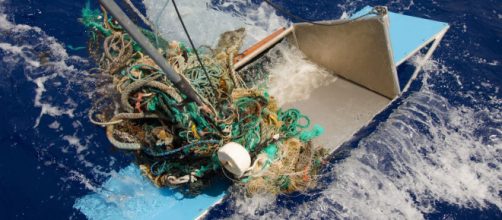Due to the amount of pollution and littering, it's incredible how much trash ends up in our oceans. They remain less than 5 percent explored, but 88 percent of the ocean's surface is said to be polluted. In one such instance, a pile of floating debris has grown large enough to be nicknamed 'Great Pacific Garbage Patch.'
What is the 'Great Pacific Garbage Patch'?
The patch has grown to be twice the size of Texas, which is well known for being the second largest state in the United States, right below Alaska. More specifically, it has grown to be more than 600,000 miles, has an estimate of 80,000 metric tons of plastic trash, and around 1.8 trillion pieces of plastic.
These new numbers are nearly 16 times the original estimations. Though the 'Great Pacific Garbage Patch' is not the only patch in the world, it is the most famous. There is a second patch just to the west, off the coast of south-east Japan.
So what caused this?
The quickest answer is littering. The currents (specifically the North Pacific Gyre, in this case) and winds bring together the floating plastics, and they attach and build until a 'patch' grows. Plastic consumption and use in the past decade is higher than ever before, (the last study being done in the 70's) and with a lack of recycling, it will either end up in a landfill or our oceans. These patches continue to grow and expand even faster with the rise of plastic production.
The world's largest collection of ocean garbage is growing exponentially, a new study says.
— AJ+ (@ajplus) March 22, 2018
The Great Pacific Garbage Patch — located halfway b/w Hawaii and California — has some 1.8 trillion pieces of plastic and weighs nearly 88,000 tons. pic.twitter.com/eCk7MzGBst
The plastic itself is not biodegradable, and 'bioplastic' does not biodegrade in the ocean environment. Instead, it will shift colors due to the sunlight, or break apart into smaller pieces, but never disappear. This creates the patches that we see, as well as the debris that we can't see.
A 'patch' is not quite an island of garbage, though. Imagine the ice in your drink. It all collects in one spot; it is not able to be walked on or considered a 'solid' being.
Dianna Parker, from the NOAA Marine Debris Program, said on the Making Waves NOAA Podcast, "What we know about this area is that it's made up of tiny microplastics, almost akin to a peppery soup, with scattered larger items, fishing gear, that kind of items swirling around."
How can we stop this?
While you might be thinking that we can just scoop up the garbage, that idea would actually do more harm than good. Most of the plastic that accumulates in these patches are so small (nearly, if not completely invisible to the naked eye) that other marine life would be negatively affected by any massive clean-up done to the areas. Studies show that it would also be unrealistic, taking over 50 ships over a year to clean up only one percent of the ocean.
The best thing we can do is to stop littering at its source and continue to try and recycle and reuse as much waste as we can. Until the core problem can be fixed, garbage will continue to pile up in these patches. Remember to do your part in researching, recycling, and helping to keep our oceans clean!


